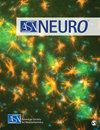终止纹状体床核突触传递的破坏减少了DBA/1小鼠癫痫诱导的死亡并改变了脑干E/I平衡
IF 3.7
4区 医学
Q2 NEUROSCIENCES
引用次数: 8
摘要
癫痫猝死(SUDEP)是难治性癫痫患者死亡的主要原因。从最近的人体研究和动物模型中积累的证据表明,癫痫相关的呼吸骤停可能是引发心肺骤停和死亡的重要因素。先前的证据表明,呼吸暂停的发作可能与癫痫扩散到杏仁核同时发生,刺激杏仁核可以可靠地诱发癫痫患者的呼吸暂停,可能涉及杏仁核区域与癫痫发作相关的呼吸骤停和随后的后通气不足和心肺死亡。本研究旨在确定一种扩展的杏仁核结构,即终纹背床核(dBNST)是否参与癫痫性呼吸骤停(S-IRA)和死亡,研究对象是DBA/1小鼠,这是一种具有听源性癫痫发作(AGS)和高发后呼吸骤停和死亡的小鼠毒株。S-IRA的存在显著增加了DBA/1小鼠dBNST中c-Fos的表达。此外,通过病毒诱导的破伤风神经毒素(TeNT)破坏dBNST的突触输出可显着提高DBA/1小鼠S-IRA后的生存率,而不影响基线呼吸或高碳酸血症(HCVR)和低氧通气反应(HVR)。dBNST的这种破坏导致了侧臂旁核(PBN)和导水管周围灰质(PAG)下游脑干区域兴奋性/抑制性(E/I)突触事件平衡的变化。这些发现表明,dBNST是一个潜在的皮质下前脑部位,可能通过其输出到脑干呼吸区介导S-IRA。本文章由计算机程序翻译,如有差异,请以英文原文为准。
Disruption of Synaptic Transmission in the Bed Nucleus of the Stria Terminalis Reduces Seizure-Induced Death in DBA/1 Mice and Alters Brainstem E/I Balance
Sudden unexpected death in epilepsy (SUDEP) is the leading cause of death in refractory epilepsy patients. Accumulating evidence from recent human studies and animal models suggests that seizure-related respiratory arrest may be important for initiating cardiorespiratory arrest and death. Prior evidence suggests that apnea onset can coincide with seizure spread to the amygdala and that stimulation of the amygdala can reliably induce apneas in epilepsy patients, potentially implicating amygdalar regions in seizure-related respiratory arrest and subsequent postictal hypoventilation and cardiorespiratory death. This study aimed to determine if an extended amygdalar structure, the dorsal bed nucleus of the stria terminalis (dBNST), is involved in seizure-induced respiratory arrest (S-IRA) and death using DBA/1 mice, a mouse strain which has audiogenic seizures (AGS) and a high incidence of postictal respiratory arrest and death. The presence of S-IRA significantly increased c-Fos expression in the dBNST of DBA/1 mice. Furthermore, disruption of synaptic output from the dBNST via viral-induced tetanus neurotoxin (TeNT) significantly improved survival following S-IRA in DBA/1 mice without affecting baseline breathing or hypercapnic (HCVR) and hypoxic ventilatory response (HVR). This disruption in the dBNST resulted in changes to the balance of excitatory/inhibitory (E/I) synaptic events in the downstream brainstem regions of the lateral parabrachial nucleus (PBN) and the periaqueductal gray (PAG). These findings suggest that the dBNST is a potential subcortical forebrain site necessary for the mediation of S-IRA, potentially through its outputs to brainstem respiratory regions.
求助全文
通过发布文献求助,成功后即可免费获取论文全文。
去求助
来源期刊

ASN NEURO
NEUROSCIENCES-
CiteScore
7.70
自引率
4.30%
发文量
35
审稿时长
>12 weeks
期刊介绍:
ASN NEURO is an open access, peer-reviewed journal uniquely positioned to provide investigators with the most recent advances across the breadth of the cellular and molecular neurosciences. The official journal of the American Society for Neurochemistry, ASN NEURO is dedicated to the promotion, support, and facilitation of communication among cellular and molecular neuroscientists of all specializations.
 求助内容:
求助内容: 应助结果提醒方式:
应助结果提醒方式:


